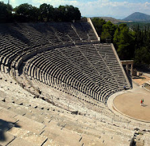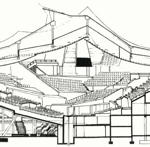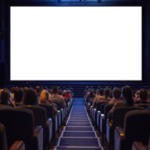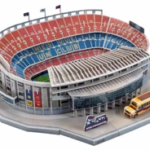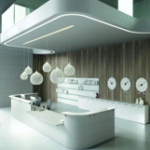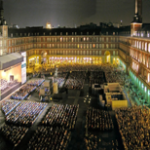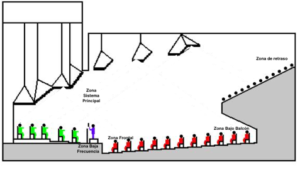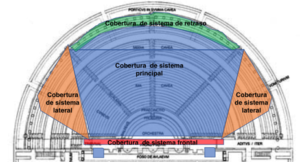
Considerations for a Sound Reinforcement Design.
What is the sound reinforcement design? Reproduction of the sound in a certain audience area by artificial means, which have the purpose of amplifying the sound to obtain a homogeneous sound pressure level (the differences of + -6dB are considered acceptable) in all the points of the room to sound, in addition to ensuring the intelligibility of the message to each of the listeners.
We will outline some considerations to take into account for the sound reinforcement design
- Previous acoustic considerations. An analysis of different parameters must be performed, such as Reverberation time (RT60), intelligibility, Definition (D), Clarity of voice (C80), RASTI, %ALcons.
| ACOUSTIC PARAMETER | RECOMMENDED VALUE |
| Average reverberation time (500 Hz – 1 kHz), full room
Average reverberation time (500 Hz – 1 kHz), full room |
0,7 ≤ RTmid ≤ 1,2 s
0,7 ≤ RTmid ≤ 1,2 s |
| Clarity of the voice C50 (“speech average), full room | C50 > 2 dB |
| Definition D (from 125 Hz to 4 kHz), occupied room | D > 0,50
D > 0,50 |
| Relationship first reflections ERR, empty or occupied room | 2 ≤ ERR ≤ 6 |
| STI / RASTI, occupied room | STI/RASTI ≥ 0,65 |
| ENCLOSURE DESING | REVERBERATION (s) |
| Cinema | 0.4 s
.4 s |
| Classroom | 0.6 s |
| Theater and Music autoamplified | 1.0 s |
| Symphonic | 2.2 s |
| Churches | 3.0 s |
- We must know what kind of enclosure we are going to sound (precise sound).
- Ampitheatre
- Philharmonic
- Bar Club
- Churches
- Cinemas
- Sports Venues
- Corporate Offices
- Live Shows
3) Request for drawings of the design to be designed. At this point it is recommended to have measurements of the place by means of a scouting to the enclosure; Plans must be requested in AutoCAD, both in 3D, 2D, plant, and court views, in order to carry out a thorough analysis. Likewise, we must remember that this design will be carried out in practice, so we must not forget to ask ourselves different questions that allow us to determine the adequate scope of the project: what is expected from this sound reinforcement design by the applicant? Is there any possible visual obstruction? Is there a limitation regarding the weight of the equipment? Is it an open or closed space? At a subjective level, what is being sought or what is expected? What kind of system is requested: the linear arrangement or conventional system? All this aimed at determining the adequate scope of the project.
4) Coverage analysis. Different design techniques will be applied and tested, supported by a prediction software, such as MAPPXT, which is used to measure and quantify parameters. At this point we must be able to solve problems of interaction between speakers, selection of adequate sound pressure level, analysis of frequency response and phase at different points of the enclosure, vertical, horizontal coverage, location of speakers, angle of inclination and weight of loudspeakers, distribution of signals for an adequate adjustment of the system looking for a homogenous coverage in all listeners alike. Likewise, we must apply reference parameters or existing standards according to the type of application; for example: in cinemas with ATMOS playback format there are regulations by Dolby that offer specifications to be met regarding sound pressure level, on-screen speakers, speaker position, sound pressure levels in the low-frequency area, among others. In sports venues, there are regulations that FIFA offers as a guide to design. Likewise, the analysis of what kind of systems will be needed based on the speaker coverage needs must be carried out: main system, front system, balcony system, delay system, lateral system, low-frequency system, system multi-channel 5.1, 7.1, to mention a few. At the end of this analysis, a design memory is generated.
- System according to coverage area. Cut view System according to coverage area.
- System according to coverage area. Plan View
5) Assembly supervision. Once the previous stage is finished, the most important thing that should be considered and we must not forget is that this design will be carried out in practice, so we must ensure that the design is carried out as it was proposed. At that time we must have the right tools to monitor such assemblies, such as inclinometer, laser, tape measures and mounting memory.
 Gabriella Galán Mendicuti studied audio studies as a telecommunications engineer with a specialization in audio and video at the Polytechnic University of Madrid. She has been involved in professional audio for last 12 years with a special emphasis on sound reinforcement design. She currently works at Meyer Sound Mexico as a Design Services Specialist Tech Support for Mexico and Latin America. She has participated in various sound reinforcement designs of the most important venues in various countries, such as theaters, churches, live shows, special events, and venues.
Gabriella Galán Mendicuti studied audio studies as a telecommunications engineer with a specialization in audio and video at the Polytechnic University of Madrid. She has been involved in professional audio for last 12 years with a special emphasis on sound reinforcement design. She currently works at Meyer Sound Mexico as a Design Services Specialist Tech Support for Mexico and Latin America. She has participated in various sound reinforcement designs of the most important venues in various countries, such as theaters, churches, live shows, special events, and venues.
